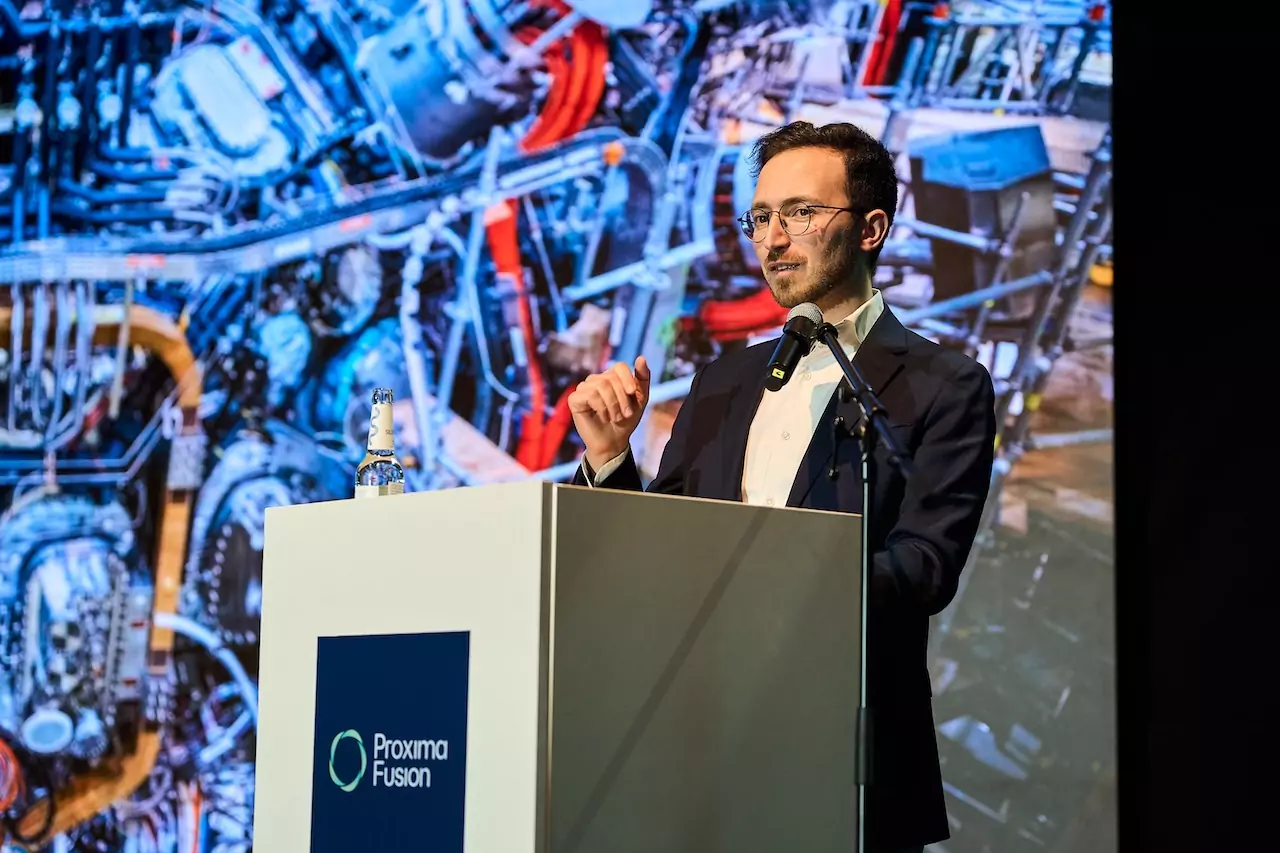Proxima Fusion, a European scale-up innovating in nuclear fusion energy, announces that it has closed a EUR 130 million (USD 150 million) Series A financing, which is the largest private fusion investment round in Europe to date.
The Series A financing is led by Cherry Ventures and Balderton Capital, with participation from UVC Partners, DeepTech & Climate Fonds (DTCF), Plural, Leitmotif, Lightspeed, Bayern Kapital, HTGF, Investors Club, OMNES Capital, Elaia Partners, Visionaries Tomorrow, Wilbe and Redalpine, the latter leading the seed round of Proxima Fusion finalised just a year ago.
The deal brings Proxima Fusion’s total funding to more than EUR 185 million (or USD 200 million) between private and public capital, accelerating its mission to build the world’s first commercial stellarator-designed fusion power plant.
Francesco Sciortino, CEO and co-founder of Proxima Fusion, says in a note: “Fusion has become a real and strategic opportunity to shift global energy dependence from natural resources to technological leadership. Proxima is uniquely positioned to take advantage of this extraordinary moment by uniting a spectacular engineering design and manufacturing team with the world’s leading research institutions, accelerating the path to commissioning Europe’s first fusion power plant in the next decade.”

Proxima was founded in April 2023 as a spin-out of the Max Planck Institute for Plasma Physics (IPP), with which it continues to work closely in a public-private partnership to lead Europe into the new clean energy era. The EU, as well as national governments, including Germany, the UK, France and Italy, increasingly recognise fusion as a next-generation technological resource, essential for energy sovereignty, industrial competitiveness and zero-emission economic growth.
Leveraging Europe’s long-term public investment in fusion and industrial supply chains, Proxima Fusion is laying the foundations for a new high-tech energy industry that will transform the continent from a leader in fusion research to a global powerhouse in its use.
“We support founders solving humanity’s toughest problems, and few are more pressing than having clean, unlimited energy,” says Filip Dames, founding partner of Cherry Ventures. “Proxima Fusion combines Europe’s scientific edge with commercial ambition, turning world-class research into one of the most promising fusion ventures globally. This is the best that deep tech has to offer and a clear signal that Europe can lead the world stage’.
Proxima is taking a simulation-based approach to design, exploiting advanced computational computing and high-temperature superconducting (HTS) magnet technology by capitalising on the revolutionary results of the Weldenstein 7-X stellarator, the IPP research experiment.
Earlier this year, together with IPP, KIT and other partners, Proxima unveiled Stellaris. The world’s first scientifically validated stellarator concept that integrates all aspects of physics, engineering and maintenance into its design, Stellaris has been widely recognised as a major step forward for the fusion industry, advancing the thesis of quasi-isodynamic (QI) stellarators as the most promising route to a commercial fusion power plant.
Daniel Waterhouse, partner at Balderton Capital, says: ‘Stellarators are not only the most technologically sound approach to fusion energy, they are the power plants of the future, capable of leading Europe into a new era of clean energy. Proxima has firmly secured its position as the European leader in the global commercial fusion race. We are excited to collaborate with Proxima’s engineering team and top European manufacturers to build a company that will be transformative for Europe’.
‘The energy transition is an epoch-making challenge, essential for the future of the planet, the success of which is closely linked to the ability to develop and scale up technologies capable of decarbonising our society,’ says Claudio Spadacini, champion of the Investors’ Club. ‘Nuclear fusion is a technology with the potential to make a substantial contribution, but the challenge is ambitious and complex. Proxima Fusion is a company that can significantly contribute to, if not lead the race to develop this ambitious technology. It is a pleasure to see how the Investors Club community has understood the challenge by joining quickly and enthusiastically.
With this new funding, the company will complete its Stellarator Model Coil (SMC) by 2027, a major hardware demonstration that will reduce the risks of high-temperature superconducting (HTS) stellarator technology by stimulating European innovation in the latter area. Proxima will also define the location for Alpha, its stellarator demo, for which it is in dialogue with several European governments. The commissioning of Alpha is scheduled for 2031 and represents the key step towards the realisation of a first-of-its-kind fusion power plant that proves the validity of Q>1 (net energy gain). The company will continue to grow its team of already over 80 people working at its three locations: at its headquarters in Munich (Germany), at the Paul Scherrer Institute near Zurich (Switzerland) and at the Culham fusion campus near Oxford (UK).
‘Fusion energy is entering a new era, moving from laboratory science to industrial-scale engineering,’ adds Sciortino, who founded the company together with Jorrit Lion, Jonathan Schilling, Martin Kubie, and Lucio Milanese. ‘This investment validates our approach and gives us the resources to provide the hardware that is essential to make clean fusion energy a reality.
Ian Hogarth, partner at Plural, points out: ‘Proxima Fusion exemplifies a new kind of European ambition: a full-scale effort to develop the world’s first fusion power plant. Since the first pre-seed round two years ago, Francesco and the team have reached extremely challenging milestones ahead of schedule and have recruited a team ranging from plasma physics to advanced magnet design and computer simulations. Their scientifically validated (peer-reviewed) star power plant project confirms that fusion can indeed be commercially viable and offers Europe an opportunity to be the first to achieve the goal.
Proxima’s roadmap to nuclear fusion
In June 2023, the scaleup announced a 7.5 million euro pre-seed round in which the first Plural fund, which will follow them over time, also invested several angels, including Italian entrepreneurs; in April 2024 there was a 20 million euro seed round. In March 2025, an important milestone was reached: Proxima Fusion’s stellarator-based fusion power plant model, which it called Stellaris, was validated by the scientific community with publication in the journal Fusion Engineering and Design. On that occasion, Dannis Whyte, head of fusion at MIT, told the Wall Street Journal that this is the most important step taken in the last ten years since the publication of their study (German Startup Publishes Open-Source Plans for Nuclear-Fusion Power Plan), as for the first time there is the validation of an integrated model of the entire machine, something that had previously only been done through the validation of individual components.
The construction of the demo magnet is planned for 2027, as the high-field HTS magnets are key to success because they allow a drastic reduction in reactor size compared to previous stellarators, enabling faster plant construction, improved power generation efficiency and reduced overall construction and operating costs. In addition, the magnets are key to the confinement of temperatures reaching over 100 million degrees Celsius. By 2031, the timetable calls for the construction of Alpha, the demonstration stellatator, followed by the construction of Stellaris, the first stellarator-based nuclear fusion power plant, within the next decade.
ALL RIGHTS RESERVED ©
